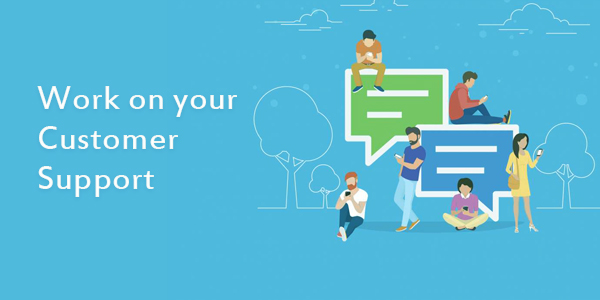
When launching a mobile application, project managers have only one dream: that their user base comes back regularly. Nothing more normal! Because for this app, they have spent hours thinking about it,
co-designing it with end-users, reviewing its UX …all that to work on its retention rate, aka the proportion of people who will always use the app a certain time after first use. How to make this rate as high as possible? Here is the list of 7 best practices to boost user retention:
1. Take care of the quality of the first use of the app

As soon as you download the application, it is very important, to see the users come back, to facilitate the first connection to the app. To do this, rely on the recovery of information from accounts already active in other services, such as Facebook, Twitter or Google.
On the one hand, you can retrieve user information without giving the impression of asking for it. On the other hand, you make it easier for you, since you do not have to create a dedicated form and then manage a database!
Another tip for the welcome of the new user is done smoothly? The presence of a tutorial, which is only displayed at the first login, explaining the main features of the application. Your way to say “welcome”!
Read Also: 15 App Development Trends That will Continue to Rule in 2019
2. Clear and high value-added services

Your application will never be able to do everything. But she must do very well for what she was designed for. Clearly, offer high value-added services, and focus on what will be really useful for users.
Feel free to offer a tutorial on the App Store and Google Play highlighting the services offered by your application, but do not overdo it! Just say enough to encourage download. In short: we must be able to understand the interest of the app from the homepage!
3. A neat UX
The base of the base! The customer experience should be simple and effective. The application must adapt to desires and needs to be studied and identified beforehand. Some rules for a UX at the top, to increase your retention rate:
Remember that an application is not a PC screen. Do not overload the information screen; avoid multiplying the CTAs, these little messages prompting the click or the purchase. Make sure all the elements are charging fast enough!
Submit some offline features. Google Maps, for example, allows you to download maps to navigate when you do not have access to a Wi-Fi or 4G network. Ask yourself this question: How can my app be useful when my users are on the other side of the world? You will definitely feel sorted.
4. Adapt to user habits
Your application must be “smart “: it must be personalized – and customizable – according to the tastes and habits of users. It may be, for example, to offer products based on search history and previous orders, to recall via a push notification feature often used (such as AlloCiné which offers you the movies broadcast in your favorite rooms) …
Your goal? Create a usage routine, providing the user with the information he or she most often needs, in a personalized way.
5. Push … intelligently!

Push notifications are very convenient for both users and developers. They make it possible to offer a service or product at the right time, to remember the minds of consumers, and to encourage people to come back to the app. But be careful, stay reasonable: do not send push notifications too often, at the risk of boring users.
Add value and think about what they are supposed to do: your notifications should be of interest. Some private sales applications send notifications, for example, when one of the user’s favorite brands is available.
Finally, pay attention to schedules, especially if your target is international. Does nobody wants to be woken up in the middle of the night by a message saying “A little hungry? Order now! “, is not it?
6. Think about gamification to improve engagement
Make your users actors in your service. The mobile application integrates a “game” dimension are those on which most return. So you can predict levels to pass, badges to get, challenges or contests to win, to improve engagement and retention.
The cherry on top of the cake? You will be able to create a community of users, who will become customers and ambassadors!
7. Work on your customer support

Good customer support is one of the guarantees of customer loyalty. Some tips:
With an online chat system, you will show that you are available immediately to answer questions and / or solve problems. If the user has a small craving, Foodora’s cat allows, for example, an almost instant response, boosting the satisfaction of hungry.
Think of chatbots to make your job easier and sort requests.
Send order confirmation emails, it’s always a pleasure!
Customize messages and error pages, depending on how you communicate. Nobody likes to be faced with a message a thousand times seen, especially after a frustrating bug!
Notify your users of updates and news by email, SMS or push notification. Do you rock your app? Show it!
Last tip for retention at the top: Make sure you improve continuously. Submit new products based on customer feedback. Do not let your application sleep – you are active and it must be seen. Be careful, however, not to suggest an update at times when your customers are most likely to use it!









